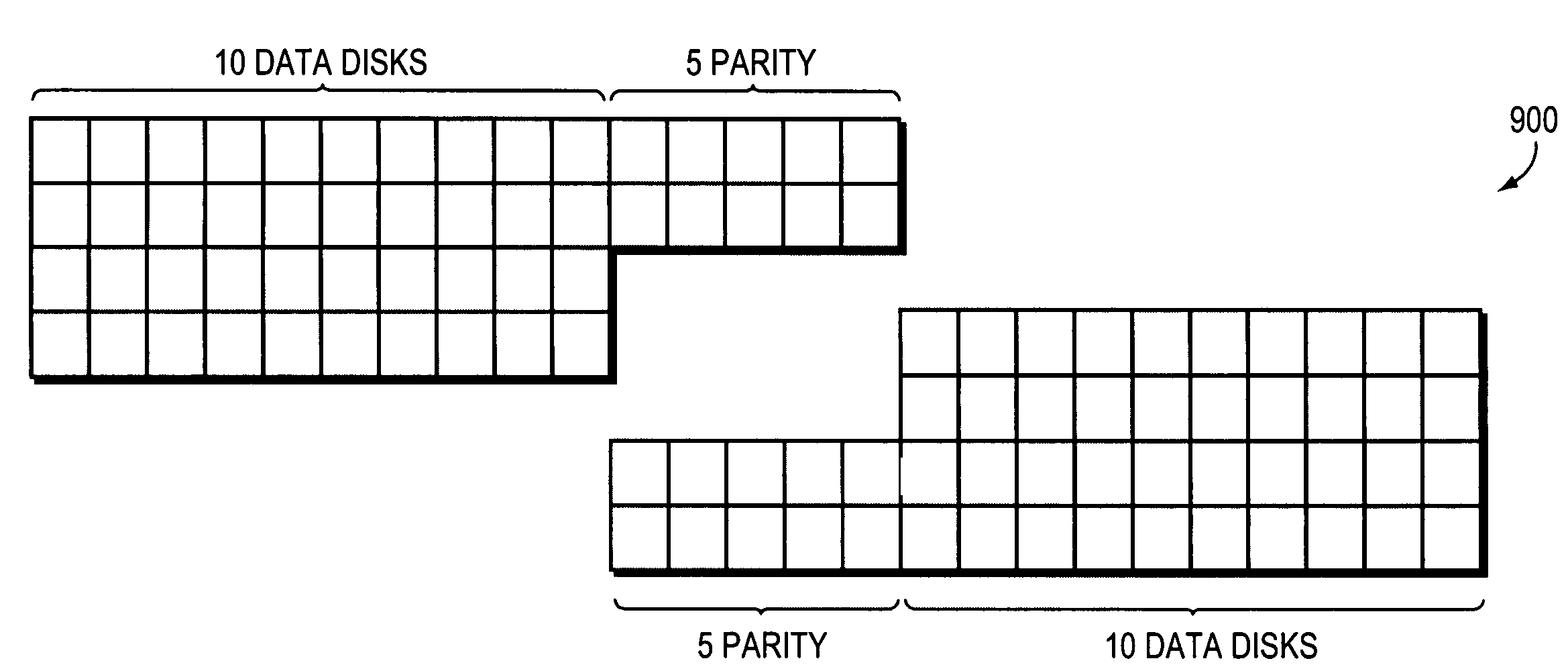Parity assignment technique for parity declustering in a parity array of a storage system
a parity array and parity assignment technology, applied in the field of arrays of storage systems, can solve the problems of data loss, disk failure, and inability to recover data from the device,
- Summary
- Abstract
- Description
- Claims
- Application Information
AI Technical Summary
Benefits of technology
Problems solved by technology
Method used
Image
Examples
Embodiment Construction
[0058]FIG. 5 is a schematic block diagram of an environment 500 including a file server, such as a network storage appliance, that may be advantageously used with the present invention. The file server or filer 520 is a computer that provides file service relating to the organization of information on storage devices, such as disks 530 of a disk array 560. The filer 520 comprises a processor 522, a memory 524, a network adapter 526 and a storage adapter 528 interconnected by a system bus 525. The filer 520 also includes a storage operating system 600 that implements a file system to logically organize the information as a hierarchical structure of directories and files on the disks.
[0059]In the illustrative embodiment, the memory 524 comprises storage locations that are addressable by the processor and adapters for storing software program code and data structures associated with the present invention. The processor and adapters may, in turn, comprise processing elements and / or logi...
PUM
 Login to View More
Login to View More Abstract
Description
Claims
Application Information
 Login to View More
Login to View More - R&D
- Intellectual Property
- Life Sciences
- Materials
- Tech Scout
- Unparalleled Data Quality
- Higher Quality Content
- 60% Fewer Hallucinations
Browse by: Latest US Patents, China's latest patents, Technical Efficacy Thesaurus, Application Domain, Technology Topic, Popular Technical Reports.
© 2025 PatSnap. All rights reserved.Legal|Privacy policy|Modern Slavery Act Transparency Statement|Sitemap|About US| Contact US: help@patsnap.com



